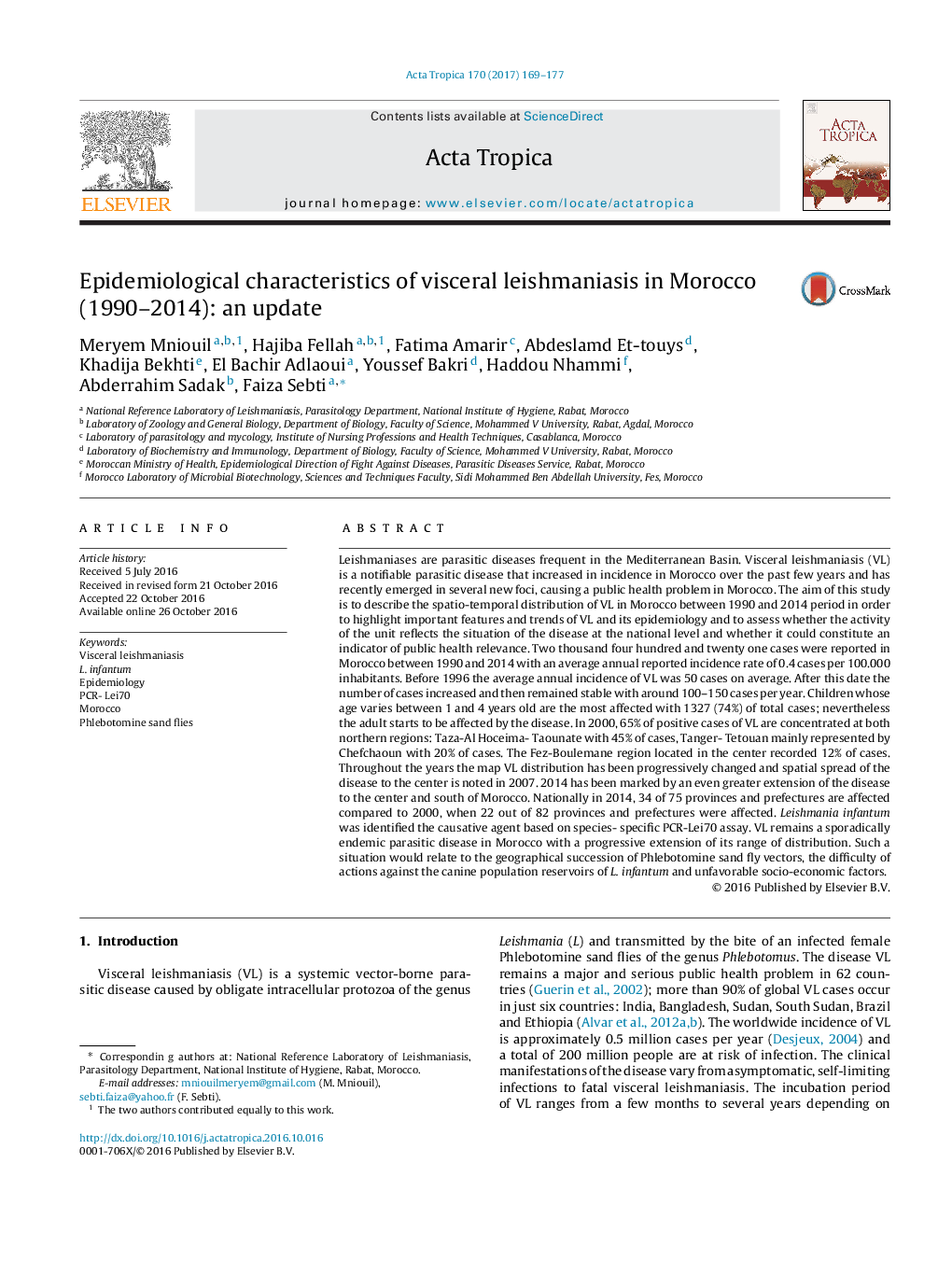| کد مقاله | کد نشریه | سال انتشار | مقاله انگلیسی | نسخه تمام متن |
|---|---|---|---|---|
| 5670804 | 1592754 | 2017 | 9 صفحه PDF | دانلود رایگان |
- Two thousand four hundred and twenty one cases of VL have been reported since 1990 until 2014.
- Before 1996, 50 cases were the average annual incidence of VL. This number increased and remained stable (100-150 cases per year).
- An even greater extension of the disease to the center and south of Morocco has been marked in 2014.
- The result of the molecular identification by Lei70-PCR with RsaI enzyme shows that L. infantum is responsible for VL.
- VL begin to affect adults.
Leishmaniases are parasitic diseases frequent in the Mediterranean Basin. Visceral leishmaniasis (VL) is a notifiable parasitic disease that increased in incidence in Morocco over the past few years and has recently emerged in several new foci, causing a public health problem in Morocco. The aim of this study is to describe the spatio-temporal distribution of VL in Morocco between 1990 and 2014 period in order to highlight important features and trends of VL and its epidemiology and to assess whether the activity of the unit reflects the situation of the disease at the national level and whether it could constitute an indicator of public health relevance. Two thousand four hundred and twenty one cases were reported in Morocco between 1990 and 2014 with an average annual reported incidence rate of 0.4 cases per 100.000 inhabitants. Before 1996 the average annual incidence of VL was 50 cases on average. After this date the number of cases increased and then remained stable with around 100-150 cases per year. Children whose age varies between 1 and 4 years old are the most affected with 1327 (74%) of total cases; nevertheless the adult starts to be affected by the disease. In 2000, 65% of positive cases of VL are concentrated at both northern regions: Taza-Al Hoceima- Taounate with 45% of cases, Tanger- Tetouan mainly represented by Chefchaoun with 20% of cases. The Fez-Boulemane region located in the center recorded 12% of cases. Throughout the years the map VL distribution has been progressively changed and spatial spread of the disease to the center is noted in 2007. 2014 has been marked by an even greater extension of the disease to the center and south of Morocco. Nationally in 2014, 34 of 75 provinces and prefectures are affected compared to 2000, when 22 out of 82 provinces and prefectures were affected. Leishmania infantum was identified the causative agent based on species- specific PCR-Lei70 assay. VL remains a sporadically endemic parasitic disease in Morocco with a progressive extension of its range of distribution. Such a situation would relate to the geographical succession of Phlebotomine sand fly vectors, the difficulty of actions against the canine population reservoirs of L. infantum and unfavorable socio-economic factors.
190
Journal: Acta Tropica - Volume 170, June 2017, Pages 169-177
